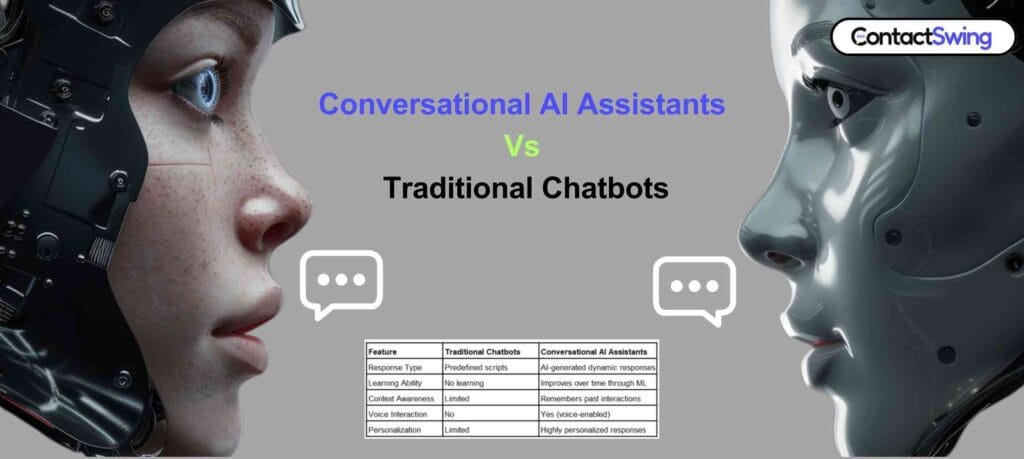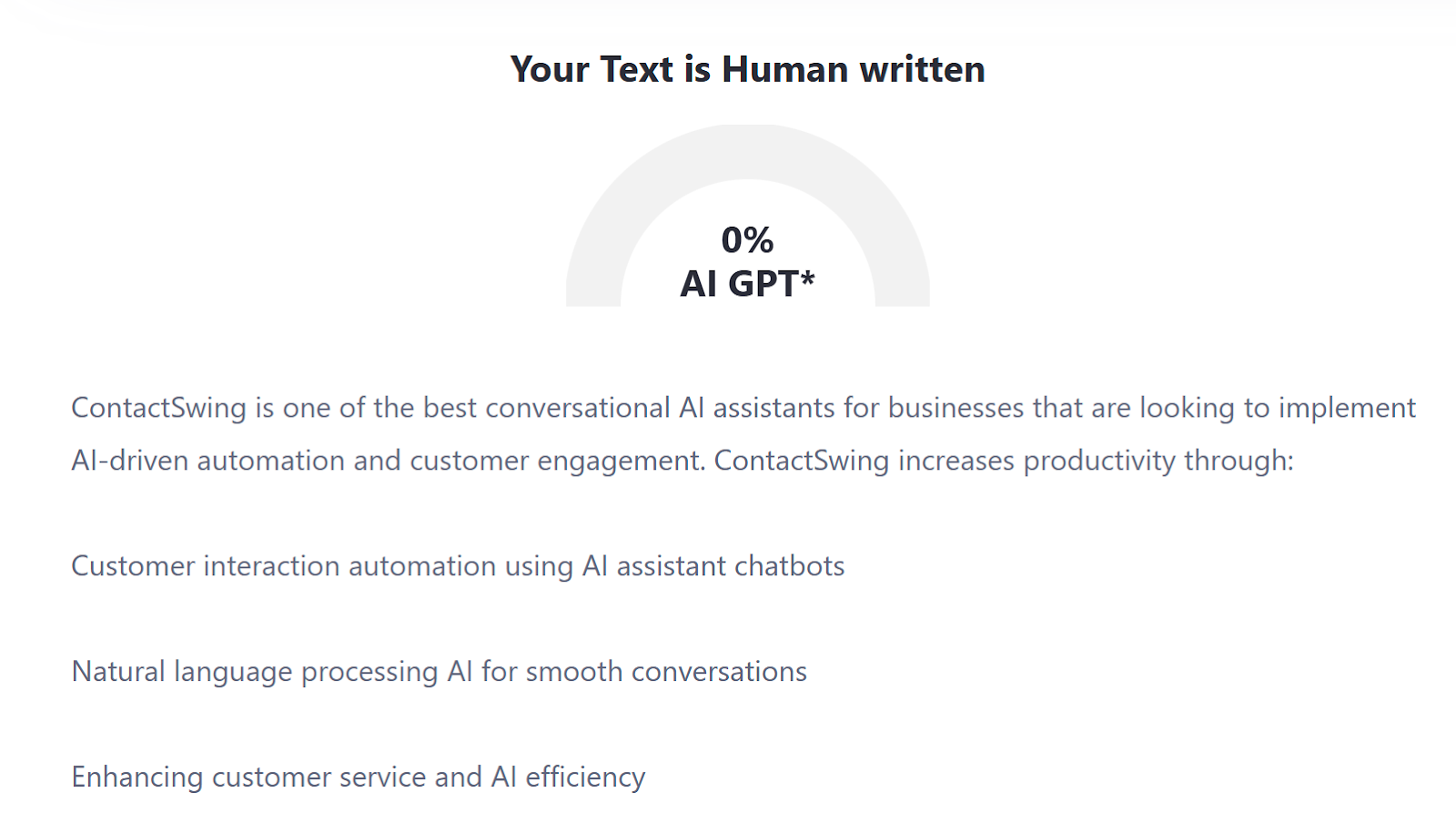
Summarize content with:
Today, businesses and individuals are increasingly using AI-powered assistants to streamline tasks and improve efficiency in the digital landscape. There is a common confusion between traditional chatbots and conversational AI. Let’s break down the differences and see how conversational AI is shaping the future of virtual assistants.
What Are the Best Conversational AI Assistants?
It refers to advanced AI assistant chatbots that rely on artificial intelligence, natural language processing, and machine learning to carry out human-like conversations. While traditional chatbots rely on the script of their responses, conversational AI can learn and adapt to produce more accurate and dynamic responses.
How Does a Conversational AI Assistant Work?
Conversational AI assistants work by integrating several AI technologies, including:
Natural Language Processing AI (NLP in Chatbots):
Helps AI understand and interpret human language.
Machine Learning (ML):
Enables AI to learn from past interactions and improve over time.
Speech Recognition:
Allows voice-based interactions.
Context Awareness:
Helps AI remember past interactions for a more personalized experience.
AI Features:
Enhance the functionality and adaptability of AI assistants.
These components ensure that the communication between users and AI assistants happens seamlessly and naturally.
AI Assistants are Powered by Conversational AI
AI assistants use conversational AI to accomplish tasks like answering questions, setting reminders, scheduling, customer support, and even controlling smart home devices. In contrast to most traditional chatbots, which can’t handle complex queries, AI assistants can manage contextual and multi-turn conversations very efficiently.
Chatbot vs. Conversational AI for AI Virtual Assistants
AI Virtual Assistants vs. Chatbots
Although traditional chatbots are still very helpful for basic tasks and customer service, AI virtual assistants are far more advanced, offering: Personalized interactions Real-time learning and adaptation, and Multimodal capabilities, including text, voice, and even vision
AI Conversational Chatbots and Voice Assistants
Voice-based AI assistants are gaining popularity. These assistants use speech recognition and conversational AI to interact with users naturally. Some of the leading AI voice assistants include:
1. Apple Siri
Apple’s Siri: An AI-powered voice assistant enabling users to assist in tasks related to setting up reminders, message sending, and general queries, among others.
2. Amazon Alexa
The one developed by Amazon is the Alexa, used by most in smart home devices. It controls the smart home system, plays music, and answers questions when demanded.
3. Google Assistant
Google Assistant connects to Google’s service and offers very strong, AI-based voice interaction for handling tasks, finding things on the web, and controlling smart devices.
Best AI Personal Assistant for Business
ContactSwing is one of the best conversational AI assistants for businesses that are looking to implement AI-driven automation and customer engagement. ContactSwing increases productivity through:
1. Customer interaction automation using AI assistant chatbots
2. Natural language processing AI for smooth conversations
3. Enhancing customer service and AI efficiency
4. Allowing businesses to work with AI for better engagement and operational efficiency
5. Providing one of the best conversational AI tools for enterprises
By leveraging ContactSwing’s AI-driven capabilities, businesses can streamline workflows, enhance customer support, and optimize productivity.
Ethical Considerations in the Use of AI Assistants
As AI assistants are becoming increasingly intelligent, the associated ethical concerns are:
Privacy and Data Security: Protection of User Data.
Bias in AI Models: Addressing biases in AI responses.
Job Displacement: Managing the Impact of AI on Employment.
User Transparency: Keeping the user aware while he is dealing with AI.
The Future of AI Assistants (Digital Assistants)
The future of AI assistants is promising, with advancements in:
Increased Autonomy
AI assistants will become more independent, performing complex tasks with minimal user input. They will be able to anticipate needs, automate decision-making, and interact across multiple platforms seamlessly.
Enhanced Personalization
In the future, with deeper data insights, AI assistants will provide much more personalized recommendations and proactive support based on users’ preferences and behavior.
Conclusion
Virtual assistants have evolved into the new revolution with conversational AI, making them smarter, more personalized, and more efficient than chatbots. In the future, AI assistants will play a huge role in productivity both personal and business productivity, and will fuel automation while helping improve user experience. From personal use to enterprise applications, AI-powered virtual assistants are changing human-computer interaction in the future. Businesses that work with AI will get an edge over their competition in efficiency and customer engagement.





